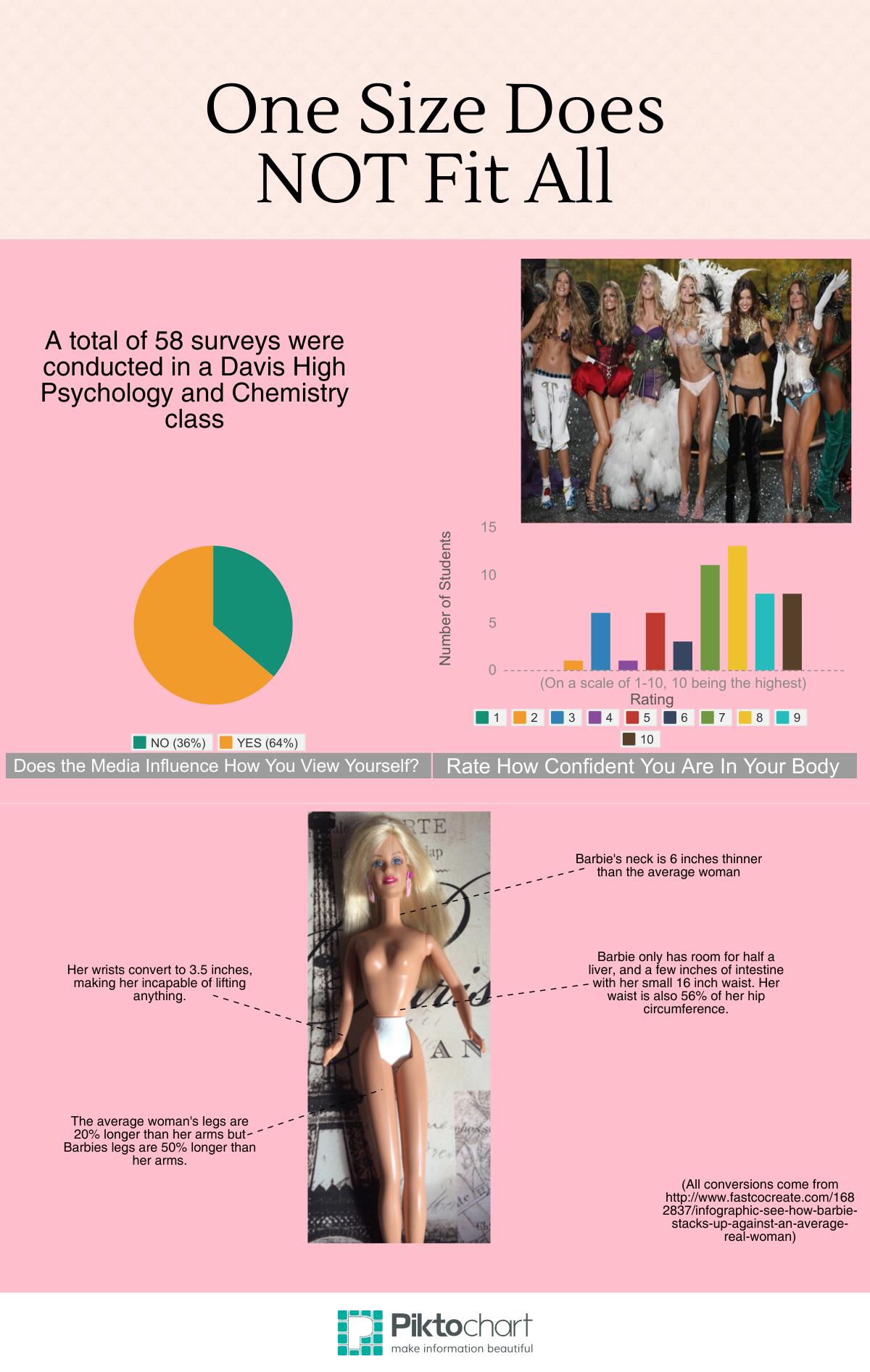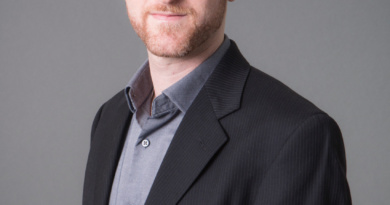Media’s ‘perfect body’ affects students’ self-image

By Kailey Smith and Denna Changizi,
Bluedevilhub.com Staff–
Walking into the Brandy Melville store at the Walnut Creek Shopping Plaza, you notice the trendy music playing in the background, a laid-back vibe and the uniform clothes neatly hung on the racks. But one thing sticks out; all the clothes are one size fits all.
But of course, the size doesn’t fit everybody. Brandy Melville is just one example of media subtlety advertising skinnier bodies. The popular store Abercrombie and Fitch also sells smaller sizes, refusing to target their clothes to larger kids.
“One size fits all is a ridiculous idea; it basically says that if you’re not in this size range, you are so far out of normal that companies didn’t even consider you when making this clothing. It’s illogical,” Feminism Club member sophomore Hallie Lassiter said.
Senior Lydia Chung agrees. “[The media] still thinks skinnier is better. […] I think one size fits all is something stores should not come up with in the first place because not everyone is skinny,” Chung said.
Other companies have also been under the microscope for advertising an ‘ideal body,’ such as Topshop, which recently came under fire for the size of its mannequins’ legs, and Victoria’s Secret for its ‘Perfect Body’ campaign that showcased tall, skinny models, very unlike the common person.
This sort of advertising impacts the way young people see their bodies. In a survey of 58 given in Psychology and Chemistry classes, 16 male students and 21 female students said that the media has an influence on how they feel about their bodies. Most males wanted to be taller or more physically fit, while most females wanted to be taller and skinnier.
“They put what sells; it’s all about money,” Davis High head counselor Courtenay Tessler said regarding the media.
Tessler stressed the impact that the media can have on people, especially young teens. “How many people do you see walking in the streets that look like that [models]?” she said.
Years back, Tessler says she noticed that Seventeen Magazine only had tall, white, blonde women in their magazine.
She called the magazine company complaining about the lack of diversity, only to find out that the workers agreed and were working on getting more diversity in the magazine.
Rarely will you see girls with that body type walking through high school hallways. “The majority of girls aren’t 6 feet 4 inches,” Tessler explained.
Topshop was recently questioned for having a mannequin with extremely unnatural looking legs that when put together were about the circumference of one average person’s leg.
“It looks anorexic,” Chung said. “Real people don’t look like that.”
Victoria’s Secret had to rename their “Perfect Body” campaign “a body for everybody” after it showed extreme opposition by the masses. The campaign featured the same body of woman with slightly varying skin tones all dressed in the stores new bra and panty line.
Senior Noelle Averett said, “It doesn’t make me want to shop there.”
Sophomore Fox Connor stated that, “There is in fact no perfect body, but furthermore eight out of the 10 models are white and there are only two light-skinned people of color models, but these two models have light skin, ‘white’ noses and straight hair.”
“Other than their slightly darker complexions they are conforming the beauty standards of a Eurocentric Aryan fetishist society, so to me, this ad says that the ‘perfect body’ is an unrealistic standard of beauty for a girl to achieve but more importantly it’s defining what beauty is perceived as. They are saying that is thin, blonde and white,” Connor said.
When asked, some students said that the media gives them positive inspiration to look skinnier or to be healthier but others said that it makes them feel bad and that the media causes them to view themselves poorly.
Averett urges stores like Brandy Melville to acknowledge that one size does not fit all. “[The] media assumes that everyone starts with the same base and that when we end up evolving in different bodies that this can be changed,” Averett said.
Many are working on combating this view of what a perfect body needs to look like. Artist Nickolay Lamm created a new, more anatomically correct, Barbie doll with measurements based off the Center for Disease Controls averages for what the average nineteen year old woman looks like.
She can be purchased with additional, natural imperfections such as stretch marks, acne, scars and tattoos.
“This is a good step in the right direction. Many girls grow up and see this and think this is what I should look like.”Averett said.
“It’s important to understand that we grow and change […] I don’t look the same way that I did when I was in high school,” Tessler said.




